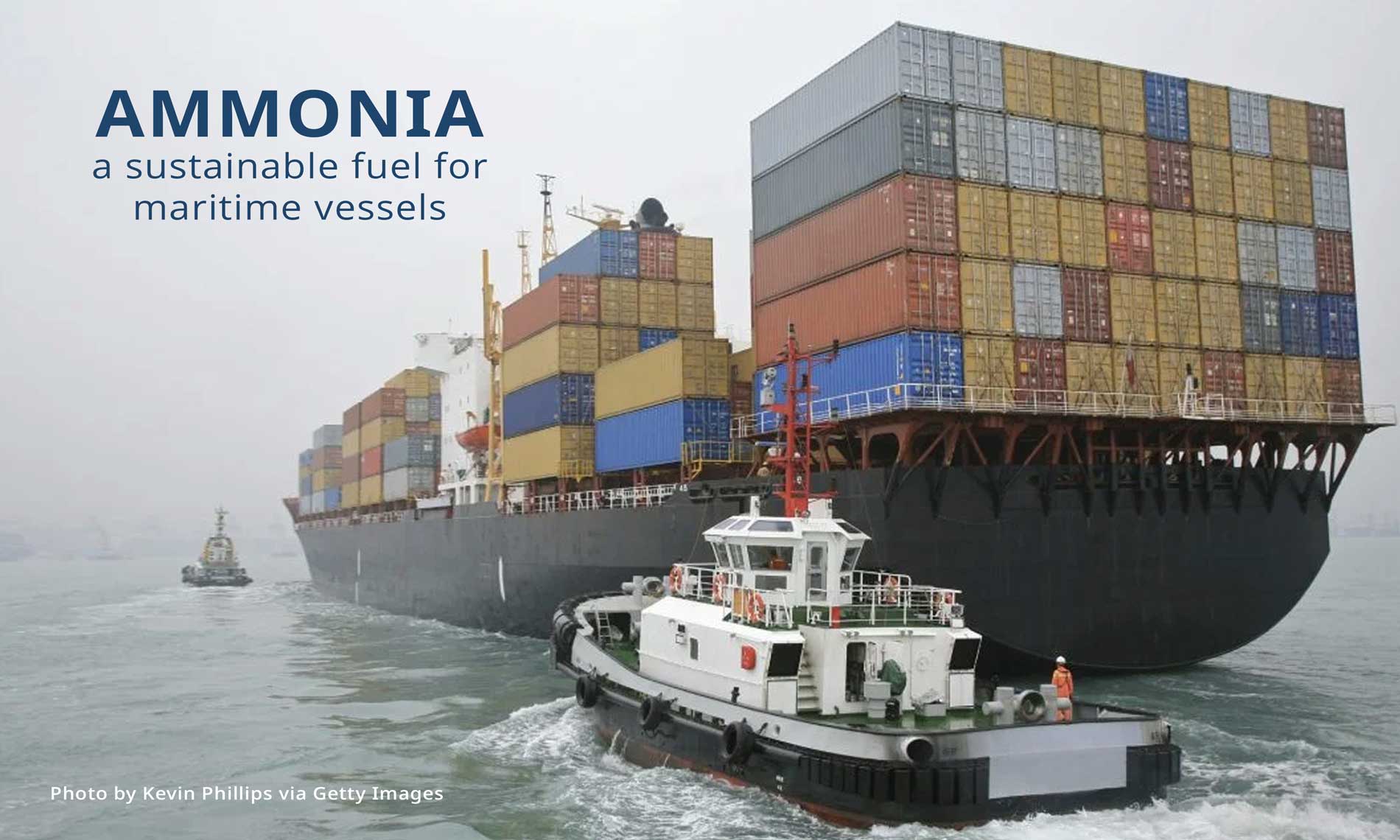
As the maritime industry explores alternative fuel sources to reduce its environmental impact, ammonia has emerged as a promising candidate. Ammonia-powered vessels offer a cleaner and more sustainable solution compared to traditional fossil fuels. With a goal of reducing emissions by 50% by the year 2050, the maritime industry is quickly adopting ammonia as its preferred new fuel. However, ensuring the safety of these vessels is paramount, given the inherent risks associated with ammonia. One crucial aspect of safety is the detection and monitoring of ammonia levels on board.
The Need for Ammonia Detection:
Ammonia (NH3) is a colorless gas with a pungent odor, and exposure to high concentrations can pose serious health risks to humans Small amounts of ammonia (5-25ppm) can be harmless, but larger amounts (>300ppm) are dangerous to human life and health. To mitigate these risks, ammonia detection systems are essential for early identification and quick response to potential leaks or emissions on maritime vessels.
Detection Technologies:
Several cutting-edge technologies are employed to detect and monitor ammonia levels on ammonia-powered vessels. Gas sensors, such as electrochemical sensors, infrared sensors, and metal oxide sensors, are commonly used for continuous monitoring. These sensors can quickly and accurately detect and accurately measure even trace amounts of ammonia in the air, providing real-time data to the ship’s monitoring and control systems.
Integration with Control Systems:
Effective integration of ammonia detection systems with the vessel’s control systems is crucial for swift response in case of an ammonia leak. Automated shut-off valves, ventilation controls, and alarm systems can be triggered based on the data received from the sensors, providing an additional layer of safety. This integration minimizes the response time and helps prevent potential accidents or environmental harm.
Safety Regulations:
The American Bureau of Shipping developed and released its updated “Requirements for Ammonia Fueled Vessels” in September of 2023. Its stated objective is to provide “Classification requirements for the arrangements, construction, installation and survey of machinery, equipment and systems for vessels operating with ammonia as fuel to minimize risks to the vessel, crew and environment.” Section 15.8 clearly outlines the regulations for ammonia gas detection systems including the location of the detectors, the alarm thresholds, and the required responses.
How CTI Can Help:
CTI has specialized in the detection of Ammonia for decades. Our ammonia detectors are designed and built to withstand the harsh conditions found in industrial food processing facilities and fishing boats. Wet conditions, high pressure hose hits, dirt, and salt water are no problem for our equipment. CTI detectors are a popular choice on fishing vessels where high powered refrigeration equipment is used onboard to flash freeze seafood immediately after the catch. Our track record for accuracy, reliability, and quality in these environments is unmatched.
Service is our Top Priority:
Because gas detection is all we do, our staff is able and willing to answer all your questions about Ammonia Gas Detection Systems. Our staff answers the phone and the engineers who designed our equipment and the technicians who service it are immediately available to take your phone call or answer your email. All of our equipment comes standard with a 2-year warranty that is honored with no questions asked.
As the maritime industry continues to embrace alternative fuels, the safety of ammonia-powered vessels becomes a top priority. Ammonia detection systems play a crucial role in safeguarding both human lives and the environment. Through the integration of advanced detection technologies, remote sensing, and comprehensive training programs, the industry can navigate the seas with confidence, ensuring a sustainable and secure future for ammonia-powered maritime transportation.

